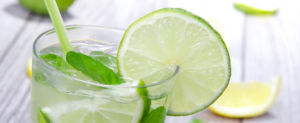According to a study by Global Market Insights, protein as an ingredient in the food and beverage market is set to surpass 29 billion dollars by 2024! Functional protein beverages aren’t just a growing trend, they play an essential role in our lives. Consumer interest in protein has driven innovation in the beverage industry, and efforts to understand and develop functional protein beverages to promote health and wellness have increased. This is great news for the beverage industry, although beverage developers need to understand the potential pitfalls of developing a functional protein beverage in order to develop one successfully.
The Solubility of Protein
While consumers are looking for functional health benefits, beverage developers will be looking for functionality of the protein in the beverage matrix. That is, how the ingredient will interact chemically with water and other ingredients. The protein must be soluble to be functional. Solubility is dependent on a number of factors, the biggest of which is pH. Every protein will have its own solubility curve depending on its chemical makeup. It’s important that a beverage developer understand this curve for the protein in order to ensure the pH range is optimized for protein solubility, and ‘maximize solubility’. A protein that is not soluble will result in gritty, grainy or a chalky mouthfeel, which is not the mouthfeel for a successful beverage.

Chemical Interactions
Proteins are very diverse in their chemical makeup, they are both hydrophilic and hydrophic. This can be advantageous in beverage development as these characteristics allow the proteins to interact with other ingredients. Hydrophobic groups interact with oils and fats, while the hydrophilic groups interact with water and other polar compounds, the components make proteins a great natural emulsifier. On the flip side, having hydrophilic and hydrophobic groups also means the proteins can interact with each other and themselves. If proteins bind together they can create gel networks, some of which become very strong. This can lead to gelling in the product, making it unacceptable to consumers. As beverage scientists, our goal is to understand these interactions and add ingredients for the protein to interact with, and form bonds with, to prevent this reaction.
The Effects of Heat
Heat can wreak havoc on a protein. It can cause it to change shape, degrade, and interact with other ingredients in ways it wouldn’t in the absence of heat. Based on their chemical makeup, different proteins will react differently to heat. Beverage developers need to understand how proteins react to heat to properly protect the protein from heat and to anticipate the changes that heat will cause and formulate the beverage accordingly.
Developing Your Next Functional Protein Beverage
Protein chemistry is complex. The best way to create a quality protein beverage is to properly design a beverage matrix that creates the optimal environment for the protein to have the proper interactions and stability over time, beverage scientists know this formulation best.
Let our experienced beverage scientists at WiseBev focus on the complexity of the proteins in your beverage and help make your protein beverage vision a successful reality.







